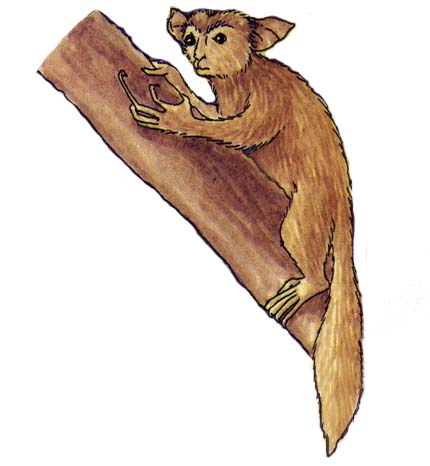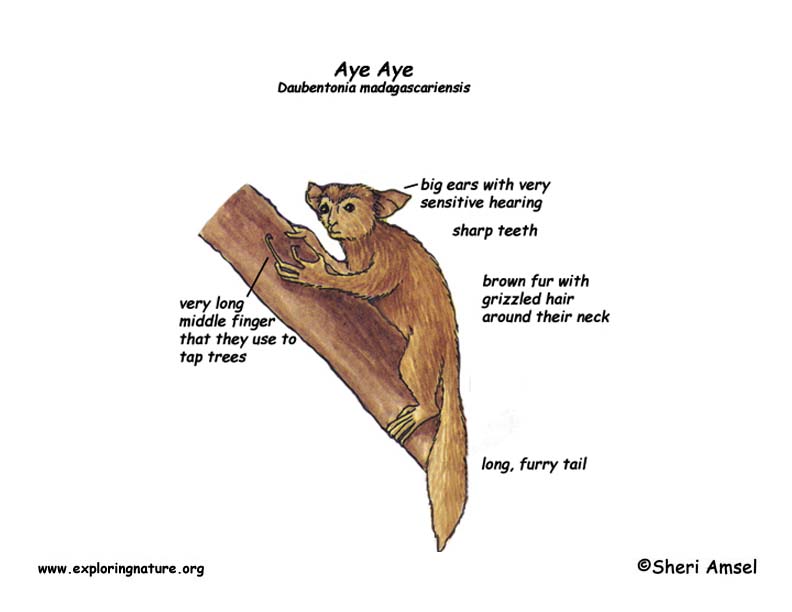

They are found on the island of Madagascar.
They live in forests.
They are brown with grizzled hair around their neck, a long, furry tail and big ears. They weigh in at about 5 pounds (2.5 kg) and can reach almost 3 feet long (90cm) including tail. They have a very long middle finger that they use to tap trees. The sound will disturb insect larvae inside the bark of the trees. They listen for the sound of the larvae moving around. If they hear it, they dig with sharp teeth into the tree and pull it out with their long finger and eat it. They have very sensitive hearing for this job.
They live alone except to mate and are active at night (nocturnal). During the day they make a nest in the fork of a tree, high off the ground where they sleep.
They eat insects, fruit, seeds and mushrooms.
They are often killed by superstitious people, who think they are bad luck. Some people think that if you see an aye aye, it means someone will soon die. Because of this aye aye are killed whenever they are seen, though they are quite harmless. Researchers say they are curious and act a bit like the North American raccoon when searching for food in and around a village.
They are pregnant for 5. 5 months (gestation) and have one baby.
They can live more than 20 years in captivity, but much less in the wild. They are listed as endangered.
Kingdom: Animalia
Phylum: Chordata
Subphylum: Vertebrata
Class: Mammalia
Order: Primates
Suborder: Strepsirrhini
Family: Daubentoniidae
Genus: Daubentonia
Species: Daubentonia madagascariensis
When you research information you must cite the reference. Citing for websites is different from citing from books, magazines and periodicals. The style of citing shown here is from the MLA Style Citations (Modern Language Association).
When citing a WEBSITE the general format is as follows.
Author Last Name, First Name(s). "Title: Subtitle of Part of Web Page, if appropriate." Title: Subtitle: Section of Page if appropriate. Sponsoring/Publishing Agency, If Given. Additional significant descriptive information. Date of Electronic Publication or other Date, such as Last Updated. Day Month Year of access < URL >.
Amsel, Sheri. "Aye Aye" Exploring Nature Educational Resource ©2005-2024. December 13, 2024
< http://www.exploringnature.org/db/view/442 >

